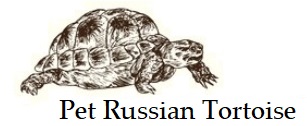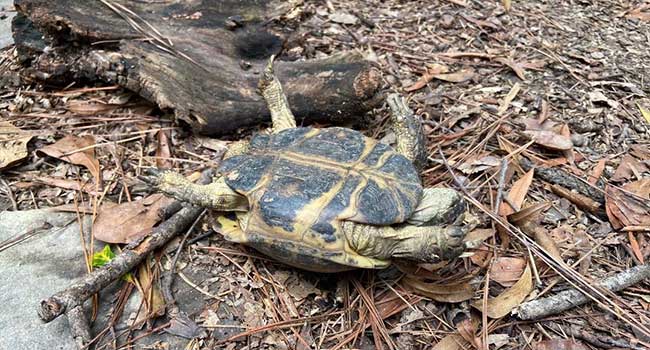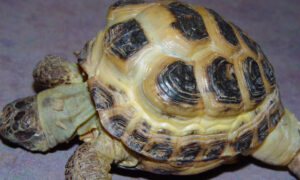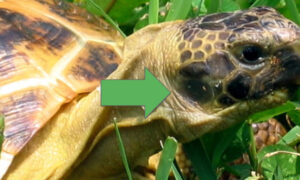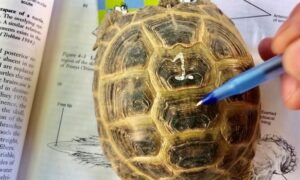It can be alarming to find your pet Russian tortoise flipped over on its back. And, it should be because it can be fatal. So if you find your tortoise upside down, it’s important that you flip your tortoise back over and correct the cause to prevent it from happening again.
Why is Your Tortoise Upside Down?
If your tortoise is flipping over it could be a one-time thing, however if it continues to happen, it’s important to find out the cause. Typically there are only five reasons a tortoise may flip over.
Climbing Accident. Tortoises weren’t built for agility, but they tend to try climb. And, they’re not great climbers. Russian tortoises can fall off after having climbed enclosure decor, or they can fall trying to climb. If your tortoise is climbing or trying to, figure out which furnishing is causing the issue and remove it. If you have a ramp in the enclosure, and your tortoise is falling off the ramp, consider modifying the ramp or removing it to avoid falling on his back.
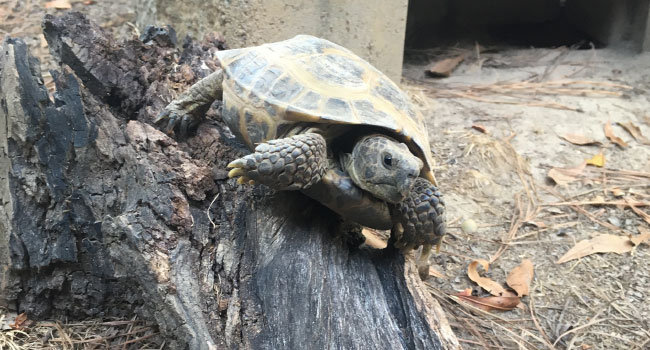
Other Tortoises. Russian tortoises can be territorial. You may notice bullying in the form of biting, scratching and even ramming. However sometimes one tortoise can flip over another tortoise. If this is the cause of your tortoise flipping over, you’ll want to separate the tortoises.
Illness or Injury. If your tortoise keeps flipping over, it is possible that he’s sick or injured. Check for signs of illness. Is your tortoise eating and pooping? Does your tortoise seem lethargic or is his energy level normal? The signs of illness may be very subtle, if you think your Russian tortoise is sick, schedule an appointment with your vet.
Other Animal Attack. Dogs are often a cause of flipping a tortoise over. Or if the tortoise lives in an outdoor enclosure, predators can flip over a tortoise
Bad Habit. Some tortoises seem to just flip over. There’s no good reason or rationale. And in those cases, it’s hard to prevent or stop the tortoise from flipping on its back.
Can My Russian Tortoise Die on His Back?
When your tortoise flips over, he will panic because he’s just not used to being on his back. Tortoises just aren’t built to be flipped over. The tortoise will probably sit for a minute before wiggling and flailing. Sometimes panic will flip the tortoise back over, but because Russian tortoises have a flatter carapace, it won’t be able to flip back over easily.
If the tortoise is not able to upright himself, several things can happen.
Overheating. Even on a cool day, the tortoise can over-exert himself trying to right himself, which can add to fatigue and heat stress.
Dehydration. When upside down, tortoises often lose control of its bowels and bladder. This can be valuable fluid intake. Even if you are able to flip the tortoise back over, it’s important to ensure water is provided to avoid dehydration.
Flies. If the tortoise is outside, flies will swarm the tortoise and concentrate on any cuts or bruises. You may even find flies around the mouth, eyes and cloaca. The flies will land on these areas and lay their eggs, which will hatch into maggots without 24 hours.
Large Lung Area. Tortoises have a large lung area and air sac at the top of the shell space. When the tortoise is on its back, the liver, stomach and intestines fall into this space, making it hard to breath.
Vomiting. If the tortoise is upside down for too long, it can regurgitate intestine or stomach contents. The tortoise can actually aspirate if it breathes in the material. It can take a few hours or days, so even if you flip the tortoise back over, he could have breathed the vomit.
Twisted Bowels. The intestinal tract can flip over on its own axis, or twists within the shell. This can be very serious unless untwisted quickly. This is often caused if the tortoise is flipped over with force, as though flipped over by a dog or because of an attack. It is important to seek veterinarian assistance if your tortoise isn’t pooping or shows signs of severe stress.
